In this video, we cover the basics of hypertension. We’re going to deal with things like cardiac output, peripheral resistance, stroke volume and heart rate, and talk about how those values are related to blood pressure. We also deal with the symptoms of hypertension.
Biology Concepts Explained in This Episode:
- Review of Heart Blood Flow
- Graph: Normal Blood Pressure
- Graph: High Blood Pressure or Hypertension
- Why is Hypertension significant?
- Types of Hypertension:
- Signs of Hypertension
- Preventing Hypertension
First off, Quick Review on Heart Blood Flow
Let’s take a quick review on how blood is coming to the heart and where it’s going from there.
We have blood that’s coming back to the heart. That is going to be deoxygenated blood. I’m not going to do a full pathway because that’s covered in other videos.
Then, it goes to the lungs. When it goes to the lungs, it’s going to pick up oxygen, and then, it’s going to come back to the heart as oxygenated blood.
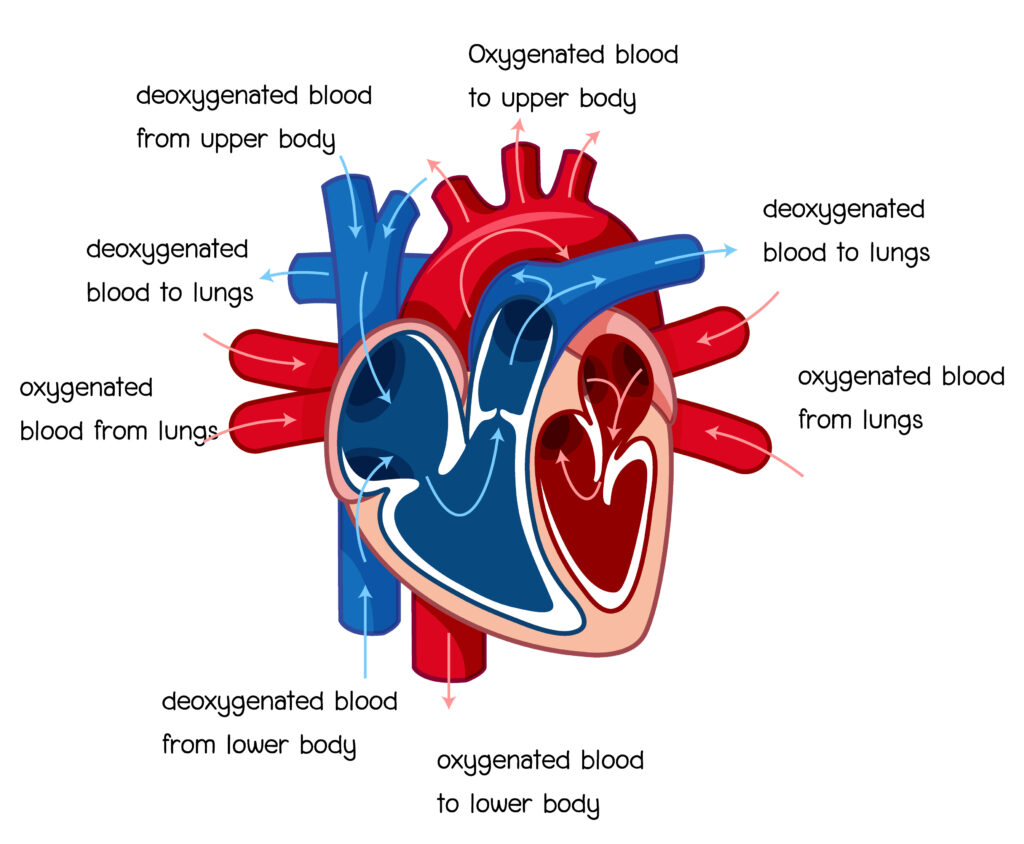
The ventricles are then going to contract. The left ventricle is going to send oxygenated blood out to the body via these major vessels that are coming off of the aorta.
Oxygenated blood goes to the organs and to the places that need it in the body and it can deliver that so that, those organs can do what they need to do.
I want you to picture one of the arterioles with blood flowing through it. This shows that we have red blood cells and with that, of course, we’re going to have plasma and a number of different things traveling through these blood vessels. This is one of the major blood vessels.
What I want you to understand is when the heart is beating, it is allowing that blood to move with a certain amount of force and that is exerting pressure on the walls of the blood vessels. It’s pushing in these directions but, as a result of the contraction of the ventricle, it’s applying force and applying pressure to the walls of those arteries.
Graph of Normal Blood Pressure (in Blood Vessels)
Now, if I were to look at a graph that’s showing the pressure on the Y-axis, in millimeters of mercury (mm Hg), and then, time on the X-axis, what I would see is that there’s going to be a fluctuation in the amount of pressure. So, it’s going to look something like this.
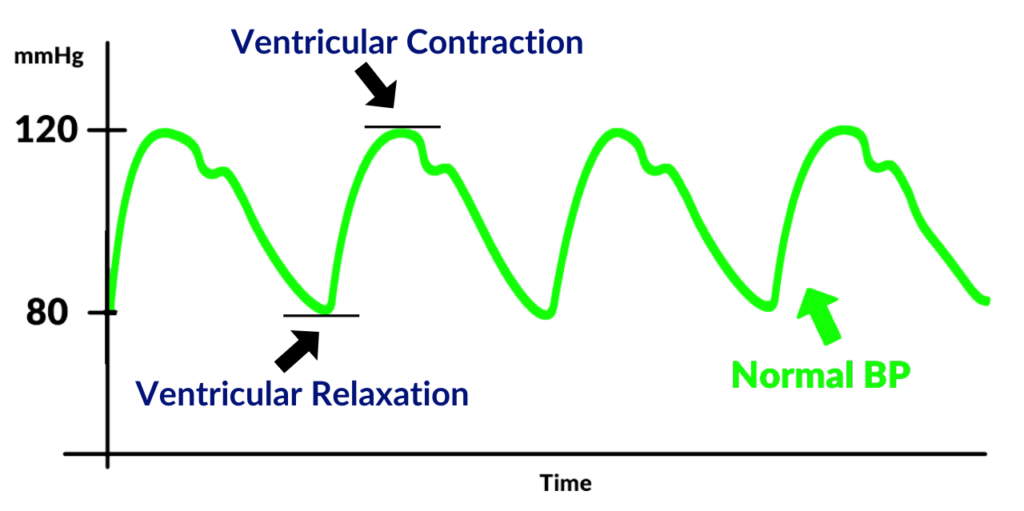
Let’s say this is in a major artery in an average individual. The high points are when ventricular contraction occurs and the low points are times when ventricular relaxation occurs.
Here, the pressure is around 120 mm Hg (contraction) over 80 mm Hg (relaxation). These are the average values we always hear about.
High Blood Pressure or Hypertension Graph
Dissecting the term hypertension, we find that “Hyper” means “over or above” and “tension” has to do with the force that is applying tension. It’s causing the blood vessels to stretch or elongate or something of that sort. In this case, we’re dealing with the pressure that is being exerted on the walls of the arteries.
So, in an individual that has hypertension, which means “high blood pressure,” we would expect to see something that looks like this.
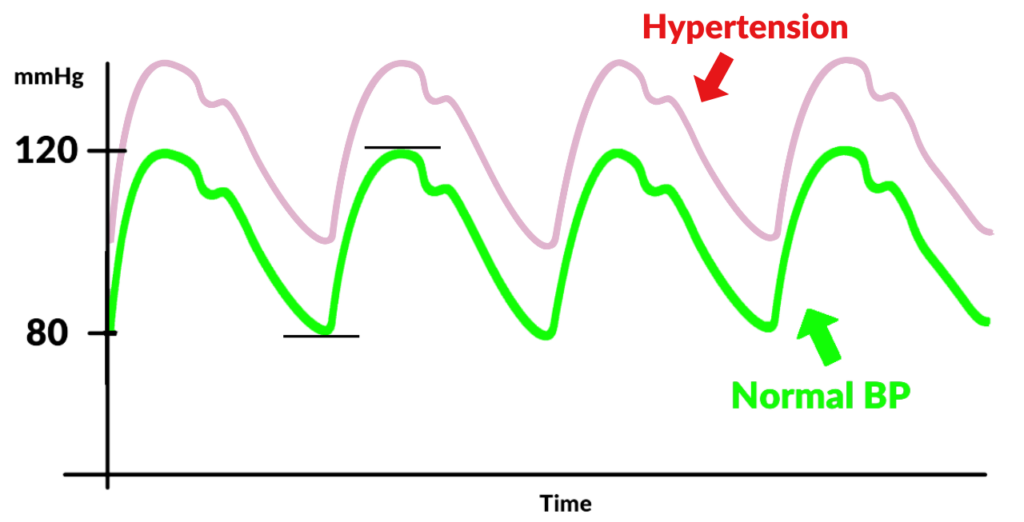
The values of pressures during contraction and relaxation are going to be significantly higher than the average of about 120 over 80.
In the above graph, let’s say this individual is around 145 over 100 or something of that sort. You can see it’s significantly higher than normal. This is high blood pressure or hypertension.
Why is Hypertension Significant?
Now, why is this such a big deal? I’m glad you asked.
It’s a big deal because we mentioned here that you’re applying pressure on the walls of the vessels. And, if that pressure is very high for a sustained period of time, that can cause damage to the blood vessels.
If you damage those blood vessels, that’s going to affect the ability of the blood to go to the target location and that is not a good thing.
Imagine this is a larger artery.
But then, we have some little arterioles or even the capillaries that are significantly smaller.
The lumen, the space in between can be as narrow as one blood cell. In many locations, we have these capillaries. Blood is moving through almost in a single file because of how small those blood vessels are.
And those are going to be even more susceptible to damage if you have high pressure for a sustained period of time. So, of course, this is not a situation that you want to have.
Types of Hypertension
There are two main categories of Hypertension I want to mention (but there are other ways of classifying it).
Secondary Hypertension
Secondary hypertension is the type of high blood pressure when its causes are identifiable.
One example would be when you might see that an individual has hypertension but, when you do a number of other tests, you discover that the individual has kidney dysfunction.
If there’s damage to the kidneys, that can actually lead to high blood pressure and that would be secondary hypertension.
Primary or Essential Hypertension
With primary hypertension, there is no specific medical cause that you can identify.
The blood pressure is consistently above 140 over 90 or higher. It is considered primary or essential hypertension if it’s sustained.
Signs of Hypertension
This is where things can get a bit complicated. One is usually asymptomatic until the condition gets to the advanced stages which is not a good thing because if that individual isn’t going in for regular check-ups, they don’t know they have hypertension.
They might feel some vague and nonspecific symptoms. Some of those symptoms might be famous like fatigue, malaise, that feeling of “I just don’t feel good,” light-headedness, headaches…
Do you notice that these are quite regular symptoms?
How often do you feel fatigued or you’re just not feeling that well or maybe you’re light-headed? Do you think about having high blood pressure?
Not necessarily. So, it can often go undiagnosed until it’s very advanced.
How do people notice that they do have high blood pressure?
They might go for a regular checkup. For example, when you take your blood pressure, you notice that it’s a little higher than normal. Then, you take it at a later occasion and you notice it’s still higher than normal.
And, maybe you do three readings in one month, where you go to the doctor and they check to see what your blood pressure is, and it’s consistently high.
That is an indication that something can be wrong with that individual in terms of hypertension.
Preventing Hypertension
Now, how do you prevent this? How do you prevent hypertension? You don’t want this to be the case. You want to be in good health.
Well, a key to that is being in good health.
In terms of prevention, there are a number of strategies for preventing hypertension. Of course, anything that has to do with general cardiovascular health.
I’m dealing with things like regular exercise, aerobic exercise, that’s going to help with general cardiovascular health; maintaining your body weight; watching sodium or salt intake — that plays a role and in a later video, we’ll talk a little bit about sodium and how that affects hypertension.

Eating well, just generally eating well, getting the right amounts of fruits and veggies; and also, this is a big one, regulating stress. That is also going to play a significant role because there can be some neurogenic effects of stress on the cardiovascular system that can cause hypertension.
So, these are some of the preventative measures that can be taken so that, you minimize that risk of hypertension.
Summary
- A normal blood pressure graph will show fluctuations in blood pressure. The high points reflect the pressure exerted durung ventricular contraction, while to low points reflect the pressure exerted during ventricular relaxation.
- These pressure values are significantly elevated than normal in hypertension.
- If blood pressure is very high for a sustained period of time, that can cause damage to the blood vessels affecting the ability of the blood to flow through them.
- Two types of hypertension are secondary hypertension, and primary or essential hypertennsion.
- Symptoms for hypertension can be similar to the most common symptoms such as fatigue, malaise, that feeling of “I just don’t feel good,” light-headedness, headaches, which makes it more difficult to detect unless it’s in the advanced stages.
- Going on a regular check up will help detect high blood pressure.


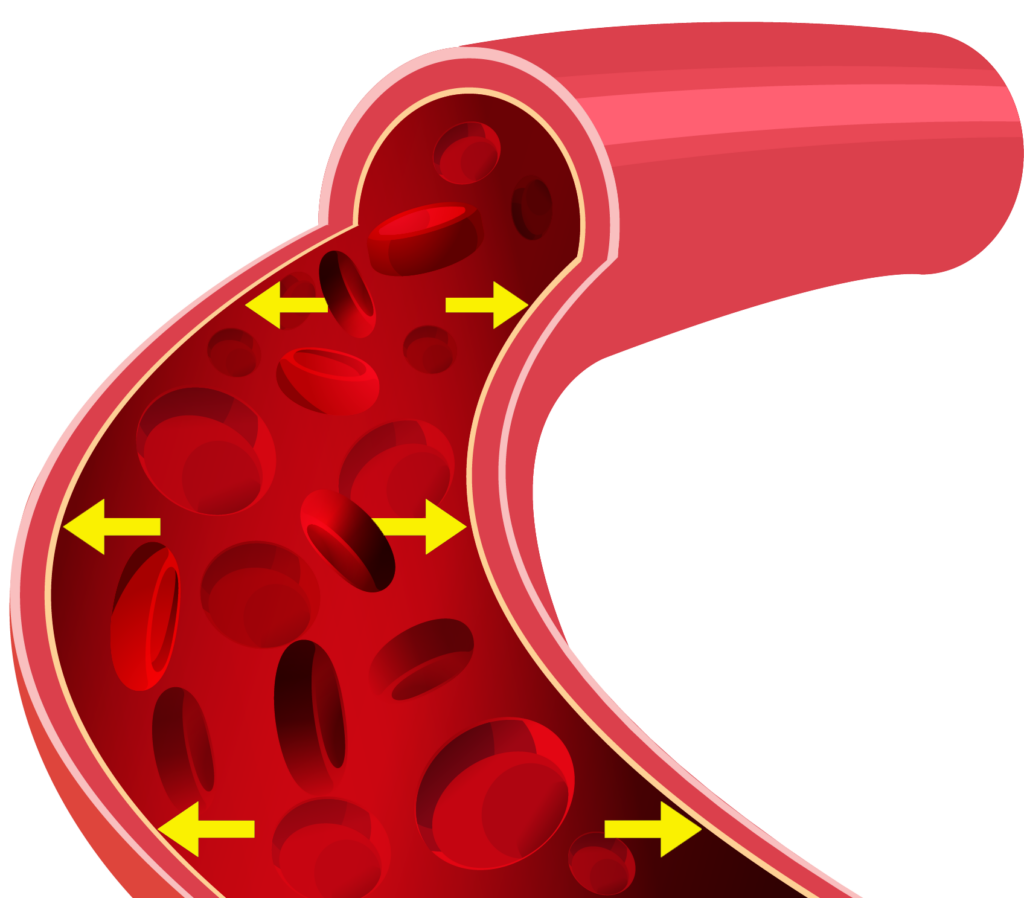
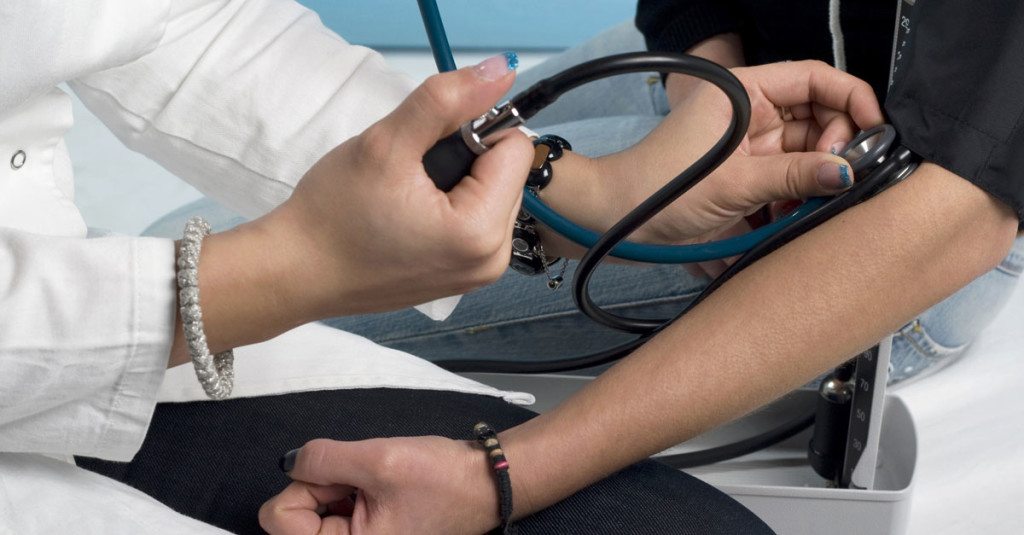
I watched this video almost as soon as you posted it. I didn’t know anything about hypertension, but it was interesting and informative. Because of this video (along with the two accompanying video’s), I was able to explain the condition to my forensics students and they could understand it perfectly. Great Job!!!
Nice to know Hypertension through your explanation.
Steven(http://www.creative-bioarray.com/).